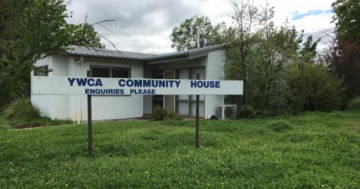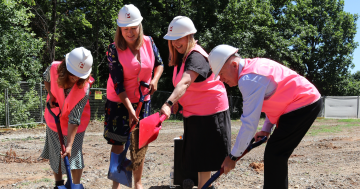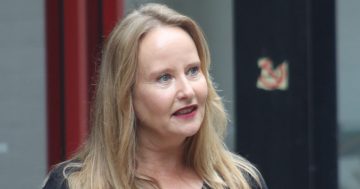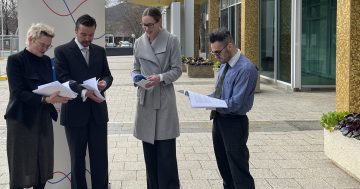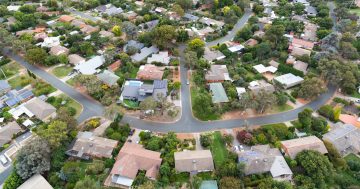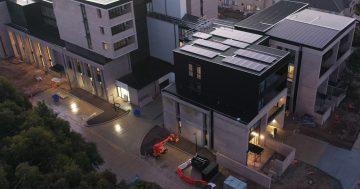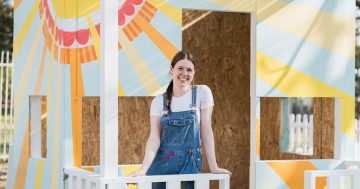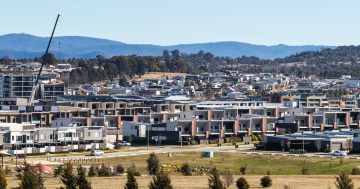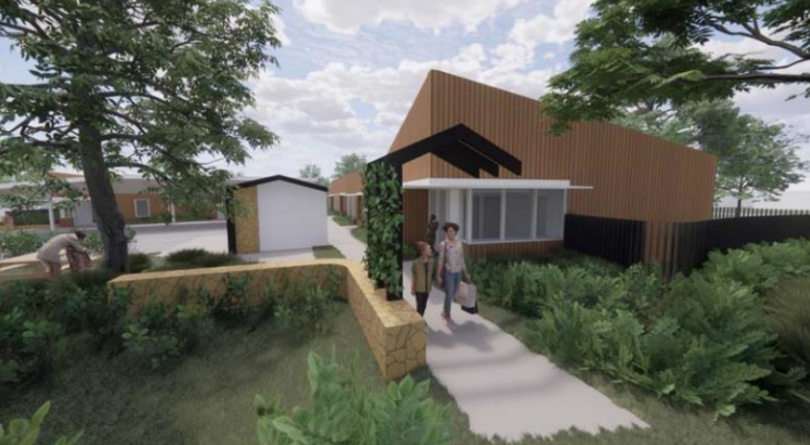
An artist’s impression of the supportive housing project. Image: AMC Architecture.
As a resident of Ainslie, I have been following with interest the progress of YWCA Canberra’s proposed YHomes build project.
If you are not aware of it, this build project will provide 10 homes to older women and women experiencing family violence on a block of land owned by YWCA Canberra on Rutherford Crescent.
A worrying statistic is that older women are the fastest growing cohort of homeless persons nationally, with domestic and family violence as a leading cause. But what does that look like in our city?
Specialist homeless services data, which captures individual presentations and contacts to homelessness services reveal that in June 2020, nearly 2000 individuals presented to homelessness services in Canberra – 596 of them were women who were homeless meaning at the time of their presentation they were either sleeping in their car, on vacant floor space or on the street.
In addition, there were 466 presentations from women who were at imminent risk of homelessness, perhaps facing a looming tenancy termination in an impossibly competitive rental market, a relationship breakdown or financial crisis.
Women aged over 45 accounted for 12 per cent of the female client base and domestic and family violence was a feature in the lives of roughly half these women.
All up, 55 per cent of people who are homeless in our city are women.
While most of us might take this shocking data on board and ask how are we going to address this problem and then look at the objectives of this YWCA project with a sense of compassion, not all in our community do.
I was Director of the Australian Government’s National Housing Strategy under the then Prime Minister, Paul Keating in the early 1990s. In addressing housing affordability, the strategy focused on the bottom 40 per cent in the income distribution in housing stress.
Housing stress we defined as paying more than 30 per cent of income in rent. We noted that many families, including the homeless, were in housing distress but were hidden from official data and “caught in the underbelly of Australian housing”.
At that time women as sole parents were the group with the highest proportion in housing stress but homelessness and a housing crisis particularly among older women were beginning to emerge as a looming national priority
It was a different time, of course. Interest rates were astronomical so the ability to buy a home had national attention. But then the average annual income was typically about a third of the average loan size and purchasing rates among people aged 25-34 were high.
Presumably there are many of us now in our retirement and living in Ainslie who purchased our homes during this very different economic setting.
Fast forward to today and, on every measure, housing affordability has exponentially worsened. The loan size required to purchase an average priced house has outstripped wages to the point that the average wage accounts for one-tenth of the loan needed to buy an average priced house and, as we are seeing now, even those on relatively comfortable incomes are finding it extremely difficult to stump up the required 20 per cent deposit.
Among most Canberra renters housing costs as a proportion of income have remained relatively stable over the years but this is not the case for those in the lowest income quintile where housing costs are eating into more of the household income.
It is hard to imagine how a woman with no superannuation and no earning capacity or a woman who has left her partner because of family violence with little else other than her children and the clothes on their backs can survive in such a dire, miserable situation.
With spiralling housing costs, wage stagnation and a national focus on wealth creation through housing investment, the tsunami of older women who become homeless because they could not afford their housing costs when their husband died, or they were divorced and then turfed-out has well and truly arrived.
Many of these women are victims of an era when their earning capacity was curtailed by government policy and were often forced to abandon their work when they married or became pregnant or, because of needing to care for children, could only take on part-time work.
We cannot undo the errors of the past, but we can change how the story ends for these women and that begins by Canberrans welcoming this Y project and its future tenants.
In particular, I am hoping Ainslie residents will join me and other neighbours in welcoming these women and their children to our community.
Professor Meredith Edwards AM was Director of the National Housing Strategy from 1991-92. She has authored many policy papers and wrote a book, Social Policy, Public Policy: from problem to practice. She is currently Emeritus Professor at the University of Canberra and an Ainslie resident.











